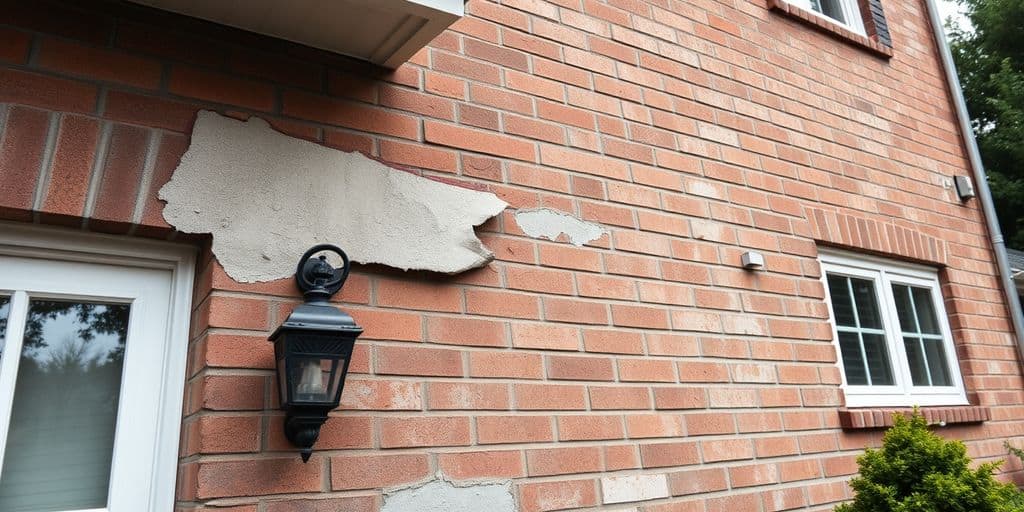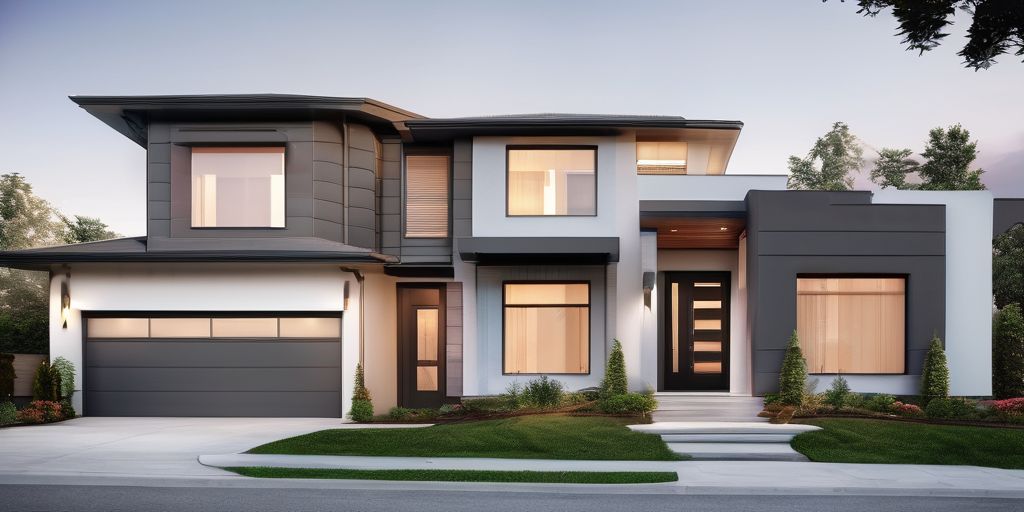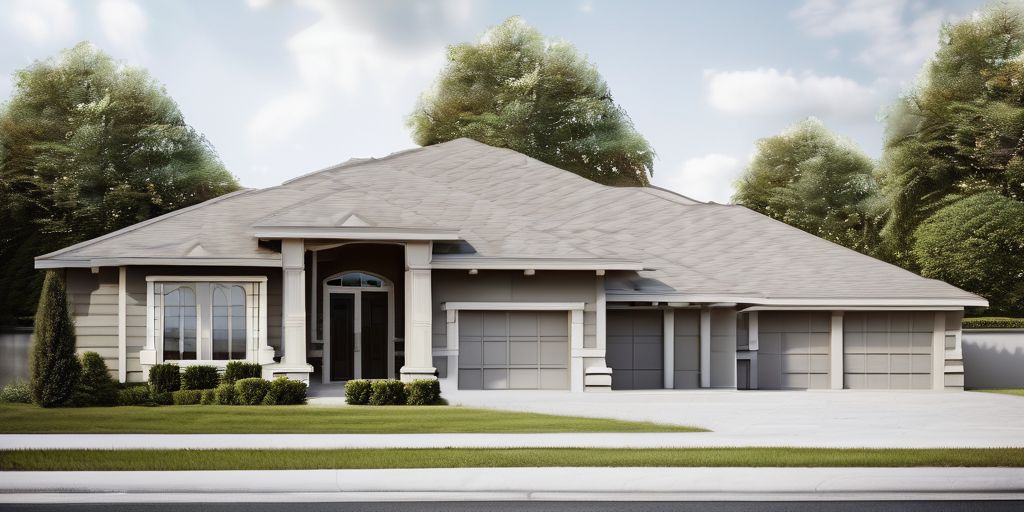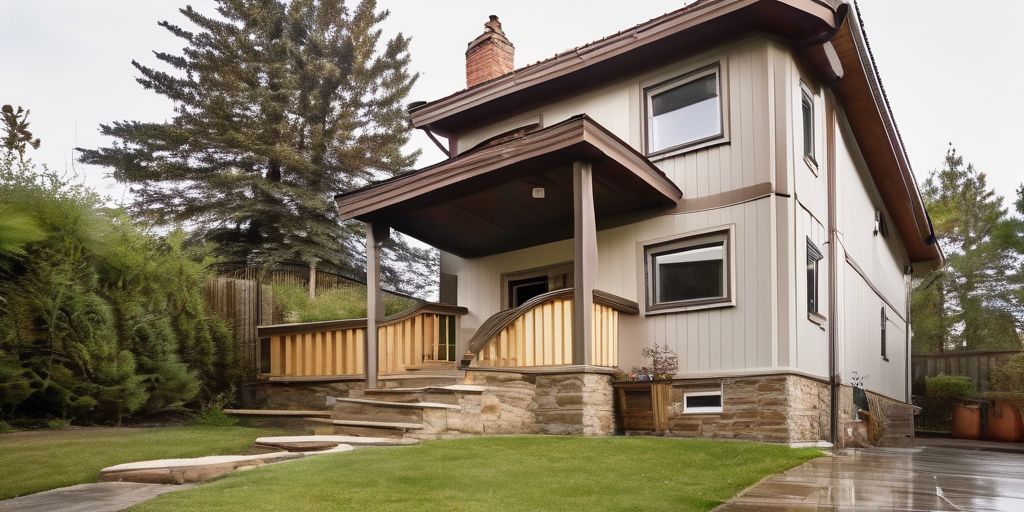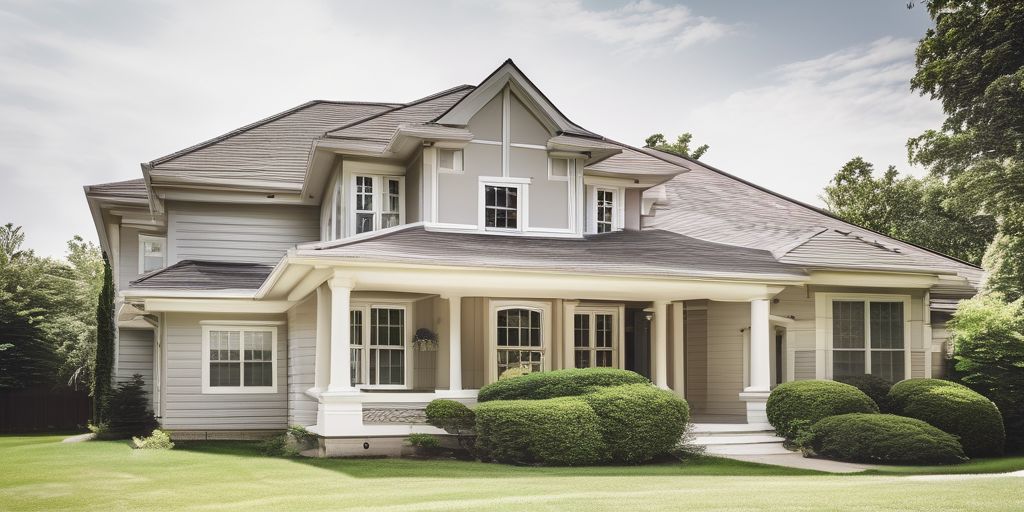Moisture can be a big problem for brick houses, especially in Burlington where the weather can be unpredictable. Keeping moisture out is important to keep your home looking good and standing strong. This means doing regular maintenance and putting in place the right prevention steps.
Key Takeaways
- Moisture can cause serious damage to brick houses if not managed properly.
- Proper drainage systems, like gutters and downspouts, help keep water away from your home.
- Using the right sealants can prevent water from getting into the brickwork.
- Good ventilation in places like basements and attics can reduce moisture buildup.
- Regular inspections and maintenance are key to preventing moisture problems.
Understanding the Impact of Moisture on Brick Houses
Moisture can have a significant impact on brick houses, leading to a range of issues that affect both the aesthetic and structural integrity of the building. Excessive moisture can cause bricks to deteriorate, leading to problems such as spalling, where the surface of the brick flakes or peels away. Additionally, moisture can lead to the growth of mold and mildew, which not only looks unsightly but can also pose health risks.
Common Sources of Moisture
Moisture can infiltrate brick homes through various channels, and understanding these is the first step towards effective moisture management. Here are some common sources:
- Condensation: When warm, moist air comes into contact with cooler surfaces, condensation can occur, leading to moisture accumulation.
- Capillary Action: Moisture can rise from the ground through tiny pores in the bricks, a process known as capillary action or wicking.
- Leaking Pipes: Faulty plumbing can lead to water leaking into brickwork, causing dampness.
- Rain Penetration: Inadequate or deteriorated waterproofing can allow rain to penetrate the brickwork.
Effects of Moisture on Brickwork
Excessive moisture can lead to deterioration of masonry materials. Here are some common effects:
- Spalling: The flaking or peeling of brick surfaces due to moisture penetration.
- Efflorescence: A white, powdery substance that forms on brick surfaces when water evaporates and leaves behind salt deposits.
- Mold and Mildew: Fungal growths that can cause health issues and degrade the appearance of brickwork.
- Structural Damage: Water infiltration can weaken the mortar and lead to instability in the brick structure.
It is essential to address moisture issues promptly to prevent long-term damage to brick houses. Regular maintenance, such as ensuring gutters are clear and downspouts are directing water away from the house, can mitigate these risks.
Signs of Moisture Damage
Recognizing the signs of moisture damage in brick houses is crucial for timely intervention and repair. Early detection can save homeowners from costly repairs in the future. Here are some common indicators of moisture issues:
- Discoloration or staining on brickwork or mortar
- Efflorescence, which is the white powdery substance on bricks
- Mold or mildew presence, indicating trapped moisture
- Peeling or blistering paint, a sign of moisture beneath the surface
- Dampness on interior walls, which may suggest exterior moisture penetration
Long-term Consequences
If moisture issues are not addressed, they can lead to severe long-term consequences:
- Compromised Structural Integrity: Prolonged moisture exposure can weaken the brick and mortar, leading to potential structural failures.
- Health Risks: Mold and mildew growth can pose significant health risks to the occupants.
- Increased Repair Costs: Delaying repairs can result in more extensive and costly damage over time.
- Decreased Property Value: Persistent moisture problems can reduce the overall value of the property.
In Burlington, where the climate can contribute to moisture problems, homeowners should be particularly vigilant. The proximity to Lake Ontario can influence local humidity levels, making it crucial to choose the right materials and techniques for exterior maintenance and painting.
Effective Drainage Solutions for Brick Houses
Proper drainage is essential for maintaining the integrity of brick houses. Without it, water can seep into the foundation, causing significant damage over time. Here are some effective drainage solutions to consider:
Importance of Proper Drainage
Ensuring proper drainage around your brick house is crucial. Water accumulation near the foundation can lead to serious issues such as basement flooding and structural damage. Proper drainage helps to:
- Prevent water from seeping into the foundation
- Reduce the risk of mold and mildew growth
- Maintain the structural integrity of the house
Installing Gutters and Downspouts
Gutters and downspouts play a vital role in directing water away from your home. Here are some tips for effective installation:
- Choose the right size: Ensure gutters are large enough to handle the rainfall in your area.
- Proper placement: Install gutters along the roof edge and downspouts at corners to direct water away from the foundation.
- Regular maintenance: Keep gutters and downspouts clear of debris to prevent clogs.
Landscape Grading Techniques
Proper landscape grading ensures that water flows away from your house. Here are some techniques to consider:
- Slope the ground: Ensure the ground slopes away from the foundation at a gradient of at least 6 inches over 10 feet.
- Use swales: Create shallow ditches to channel water away from the house.
- Install French drains: These are trenches filled with gravel and a perforated pipe to redirect water away from the foundation.
Maintenance Tips for Drainage Systems
Regular maintenance of your drainage system is essential to keep it functioning properly. Here are some tips:
- Inspect regularly: Check gutters, downspouts, and drainage pipes for clogs and damage.
- Clean gutters: Remove leaves and debris from gutters at least twice a year.
- Check for leaks: Ensure there are no leaks in the gutters and downspouts.
- Monitor landscape grading: Make sure the ground around your house remains properly sloped.
In Burlington, where the weather can be unpredictable, maintaining an effective drainage system is especially important. The proximity to Lake Ontario can lead to higher humidity levels, making moisture management a key consideration for homeowners.
By implementing these drainage solutions, you can protect your brick house from moisture-related issues and ensure its longevity.
Choosing the Right Sealants for Brickwork
Types of Sealants
Selecting the right sealant is crucial for protecting your brickwork. There are several types to consider:
- Silicone Sealants: These are flexible and waterproof, making them ideal for areas exposed to heavy moisture.
- Acrylic Sealants: These are paintable and provide a good balance between flexibility and durability.
- Polyurethane Sealants: Known for their strong adhesion and elasticity, these are great for exterior applications.
Application Techniques
Proper application of sealants ensures long-lasting protection. Here are some steps to follow:
- Clean the Surface: Remove any dirt, dust, or loose particles from the brick surface.
- Apply Primer: Use a primer if recommended by the sealant manufacturer.
- Use a Caulking Gun: Apply the sealant evenly using a caulking gun.
- Smooth the Sealant: Use a smoothing tool to ensure the sealant is evenly distributed.
- Allow to Dry: Let the sealant dry completely before exposing it to moisture.
Benefits of Using Quality Sealants
Using high-quality sealants offers several benefits:
- Enhanced Durability: Quality sealants provide long-lasting protection against moisture and weathering.
- Improved Aesthetic Appeal: They help maintain the brick’s appearance by preventing stains and discoloration.
- Energy Efficiency: Proper sealing can improve insulation, reducing energy costs.
Common Mistakes to Avoid
Avoid these common mistakes when applying sealants:
- Skipping Surface Preparation: Failing to clean and prep the surface can lead to poor adhesion.
- Using the Wrong Sealant: Not all sealants are suitable for all types of brickwork. Choose the right one for your needs.
- Over-application: Applying too much sealant can cause it to crack and peel over time.
Proper sealing is essential for preserving the integrity and appearance of your brickwork. Take the time to choose the right sealant and apply it correctly to ensure long-lasting results.
In Burlington, landmarks like the Royal Botanical Gardens showcase the importance of using quality materials to maintain the beauty and durability of brick structures.
Ensuring Proper Ventilation in Brick Houses
Proper ventilation is essential for maintaining the health and longevity of brick houses. It helps to reduce moisture buildup, which can lead to various structural and aesthetic issues. Here are some key areas to focus on when ensuring proper ventilation in brick houses:
Areas Prone to Moisture
Certain areas in brick houses are more susceptible to moisture accumulation. These include basements, attics, and crawl spaces. Identifying these areas and implementing ventilation solutions can prevent moisture-related problems.
Ventilation Solutions for Basements
Basements are particularly prone to moisture due to their location below ground level. To improve ventilation in basements:
- Install exhaust fans to remove damp air.
- Use dehumidifiers to maintain optimal humidity levels.
- Ensure that windows and vents are not blocked.
Attic Ventilation Tips
Proper attic ventilation is crucial for preventing moisture buildup and maintaining a stable temperature. Here are some tips:
- Install ridge vents along the roof peak.
- Use soffit vents to allow air to flow into the attic.
- Ensure that insulation does not block the vents.
Reducing Indoor Humidity
High indoor humidity can contribute to moisture problems in brick houses. To reduce indoor humidity:
- Use exhaust fans in kitchens and bathrooms.
- Avoid drying clothes indoors.
- Use air conditioners and dehumidifiers during humid weather.
By focusing on these areas, homeowners can effectively manage moisture levels and protect their brick houses from potential damage. Regular maintenance and inspections are key to ensuring that ventilation systems remain effective.
Routine Maintenance to Prevent Moisture Issues
To ensure the longevity and aesthetic appeal of painted brick houses, routine maintenance is essential. Here are some key steps homeowners can take:
Regular Inspections
Regularly inspect the exterior for signs of damage, such as cracks or mold, which can indicate moisture problems. Proactive maintenance not only preserves the beauty of your home but also acts as a safeguard against the harsh elements.
Cleaning and Upkeep
Clean the painted surfaces gently to prevent dirt build-up that can trap moisture and lead to deterioration. Occasional power washing can remove dirt and grime, but be cautious not to damage the brickwork.
Touch-up Painting
Touch up paint as needed to maintain a protective seal over the brickwork, keeping in mind that brick is porous and requires breathability. This critical step prevents the dry bricks from drawing moisture out of the new mortar too quickly, which can lead to improper curing.
Seasonal Maintenance Tips
- Inspect and clean gutters and downspouts regularly to prevent clogs and overflow.
- Check for and seal any new cracks in the brickwork.
- Ensure proper landscape grading to direct water away from the foundation.
- Consider installing or maintaining drainage systems to manage water flow effectively.
By taking these steps, homeowners can safeguard their property against the detrimental effects of moisture, thus helping to maintain home value and ensure the longevity of the brickwork.
Repairing and Restoring Moisture-Damaged Brickwork
Identifying Damage
Recognizing the signs of moisture damage in brickwork is crucial for timely repairs. Common indicators include:
- Discoloration or staining on bricks or mortar
- Efflorescence, a white powdery substance on the surface
- Mold or mildew growth
- Peeling or blistering paint
- Dampness on interior walls
Early detection can save homeowners from costly repairs. Regular inspections are key, especially in areas prone to moisture.
Choosing the Right Materials
Selecting appropriate materials is essential for effective repairs. Consider the following:
- Use high-quality bricks that match the existing structure
- Opt for mortar that complements the original composition
- Choose water-resistant materials to prevent future damage
Proper material selection ensures the longevity and integrity of the repairs.
Matching Mortar Color and Texture
For a seamless appearance, it’s important to match the mortar color and texture. Key considerations include:
- Ensuring color consistency with the existing mortar
- Matching the texture to maintain the character of the brickwork
- Analyzing and replicating the original mortar composition
A well-matched mortar mix can significantly enhance the visual appeal and durability of the brickwork.
Professional vs. DIY Repairs
Deciding between professional and DIY repairs depends on the extent of the damage and your skill level. Consider the following:
- Professional repairs are recommended for extensive damage or heritage properties
- DIY repairs can be suitable for minor issues if you have the necessary skills and tools
- Weigh the costs and benefits of each option before making a decision
For significant issues, especially in historic areas like downtown Burlington, consulting a professional can ensure the preservation of your home’s character and structure.
Preparing Brick Surfaces for Painting
Site Assessment and Inspection
Before starting any painting project, it’s crucial to assess the site. This involves checking the condition of the brick surface for any damage or irregularities. Look for cracks, erosion, or any signs of moisture damage. Ensuring that the surface is thoroughly prepared will lead to a successful painting outcome. Also, consider the local weather patterns in Burlington to avoid rain or freezing temperatures that can affect paint application.
Cleaning and Surface Preparation
Cleaning the brick surface is a vital step. Remove all dirt, debris, and mildew using appropriate cleaning solutions. For stubborn stains, a power wash might be necessary. If the exterior bricks have white residue, it indicates moisture has gotten into the bricks, resulting in efflorescence. This must be addressed before painting. After cleaning, allow the bricks to dry completely. Repairs with acrylic caulk should be made wherever there are small cracks.
Choosing the Right Paint
Selecting the right paint is essential for a long-lasting finish. For exterior bricks, use porous paint to ensure the bricks can still breathe. High-quality paint is crucial for successful results. First, apply a conditioner or primer, then a breathable latex exterior paint. This helps in protecting the brick surface and allows for a more durable finish.
Application Techniques for Longevity
The best way to paint brick involves a 3-step process: surface prep, priming, and applying the paint. Use rollers meant for textured surfaces to ensure even coverage. Apply at least two coats of exterior paint for a durable finish. Follow the paint manufacturer’s instructions for the best results. Proper application techniques will ensure the paint job lasts longer and looks professional.
Before painting brick surfaces, it’s crucial to prepare them properly. Start by cleaning the bricks thoroughly to remove dirt and grime. Next, repair any cracks or damaged areas to ensure a smooth finish. Finally, apply a primer to help the paint adhere better. For more detailed steps and expert advice, visit our website.
Conclusion
In the end, tackling moisture problems when painting brick houses in Burlington is all about being prepared and staying on top of maintenance. By setting up good drainage, using the right sealants, and keeping an eye on your brickwork, you can keep your home looking great and standing strong. Remember, a little effort now can save you a lot of trouble later. So, take the time to protect your brick house from moisture, and you’ll enjoy its beauty and durability for many years to come.
Frequently Asked Questions
What are the common sources of moisture in brick houses?
Common sources include rain, condensation, and water vapor rising from the ground.
How does moisture affect brick houses?
Moisture can cause mold, damage mortar, and even weaken the structure.
What are some signs of moisture damage in brick houses?
Look for white powdery residue (efflorescence), flaking bricks, and crumbling mortar.
How can I prevent moisture damage in my brick house?
Install proper drainage, use quality sealants, ensure good ventilation, and do regular inspections.
Why is ventilation important for brick houses?
Ventilation helps reduce condensation and keeps areas like basements and attics dry.
What should I do if I find moisture damage in my brick house?
Identify the source, repair the damage, and consider consulting a professional for extensive repairs.

